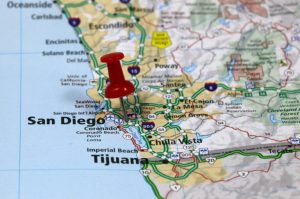Content

You can also manage subscriptions, international payments to your team, contractors or freelancers all over the world, all from one place. Working Capital or Net Working Capital is a measure of how efficient a business is in its day-to-day operations.
- NWC is a measure of a company’s liquidity, operational efficiency, and short-term financial health.
- In contrast, another company that sells fast-moving products online with customers paying with credit cards will have liquidity even with a small amount of net working capital.
- Is additional spending for legal and accounting fees post transaction worth resolving a working capital disagreement?
- In this case, the retailer may draw on their revolver, tap other debt, or even be forced to liquidate assets.
- These formulas, along with others, are referred to as liquidity ratios as they are measures of a company’s ability to meet its short term obligations.
- Use the net working capital formula to subtract current liabilities from current assets.
And such, a company with a current ratio of greater than 1 will have positive net working capital. These formulas, along with others, are referred to as liquidity ratios as they are measures of a company’s ability to meet its short term obligations. The working capital cycle , also known as the cash conversion cycle, is the amount of time it takes to turn the net current assets and current liabilities into cash. The longer this cycle, the longer a business is tying up capital in its working capital without earning a return on it. Companies strive to reduce their working capital cycle by collecting receivables quicker or sometimes stretching accounts payable. NWC estimates are derived from the array of assets and liabilities on a corporatebalance sheet. Current assets listed include cash, accounts receivable, inventory, and other assets that are expected to be liquidated or turned into cash in less than one year.
Small Business Financing Popular Links Open
Keep in mind that a negative number is worse than a positive one, but it doesn’t necessarily mean that the company is going to go under. It’s just a sign that the short-term liquidity of the business isn’t that good.

The accounting methodology (i.e., GAAP applied consistently or some other applicable language) should also be included within the purchase and sale agreement. In addition to the definitions, for purposes of clarity, a sample schedule calculation as an exhibit is recommended for inclusion in the purchase and sale agreement.
How The Net Working Capital Ratio Works
If the change in NWC is positive, the company collects and holds onto cash earlier. However, if the change in NWC is negative, the business model of the company might require spending cash before it can sell and deliver its products or services. Current liabilities are a company’s debts or obligations that are due to be paid to creditors within one year. Working capital is used by companies to better understand how capable they are of meeting their financial obligations or taking advantage of opportunities over the next 12 months.

Positive net working capital indicates that a company has sufficient funds to meet its current financial obligations and invest in other activities. For example, if current assets are $85,000 and current liabilities are $40,000, the business’s NWC is $45,000. A company can be endowed with assets and profitability but may fall short of liquidity if its assets cannot be readily converted into cash. Positive working capital is required to ensure that a firm is able to continue its operations and that it has sufficient funds to satisfy both maturing short-term debt and upcoming operational expenses. The management of working capital involves managing inventories, accounts receivable and payable, and cash. Working capital is a financial metric which represents operating liquidity available to a business, organization, or other entity, including governmental entities.
Current Assets
A trade credit insurance policy from Euler Hermes can give you access to powerful information sources that can make determining the creditworthiness of a new client more robust. This ensures your financial institution that your risk management practices are sound. A deficit in working capital can mean you lose out on growth and new business opportunities. The Euler Hermes Risky Business Report shows that by the end of 2019, 61% of CFOs surveyed had reported that nonpayment increased, disrupting the working capital cycle.
The offers that appear on the website are from software companies from which CRM.org receives compensation. This site does not include all software companies or all available software companies offers. For one, it can indicate a company’s potential to grow and invest and avoid bad trade debt.
A tip to make the financial management easier and keep the net working capital stable is to rely on technology. Nowadays, there are several financial control software that assist in these processes, handle a large volume of data and offer the integration of the company’s sectors. If that same company were to borrow $10,000 and agree to pay it back in less than one year, the working capital has not increased—both assets and liabilities increased by $10,000. By collecting payments in a timelier manner, you can increase your business’s net working capital along with liquidity. If a company has positive working capital, then it has money to invest and grow the business. However, when the working capital is negative, this is an indication that it is in debt.
Incremental investment in net working capital is another important value driver in a calculation of shareholder value. This session focuses on where to find the data, how to calculate historical working capital trends and how to project future working capital needs. As with previous sessions, we will use Domino’s Pizza as of September, 2020, as a case study. Readers who want to calculate working capital while reading this tutorial may wish to download the accompanying spreadsheet. Managing expenses can be cumbersome, especially when the business uses traditional means like company credit or debit cards. With Wise, you can open an account in minutes and pay little to no monthly fees.
Invest In Financial Software Tools
But for now, Noodles & Co, like many companies do it because it prevents them from having to show a debt-like capital lease liability on their balance sheets. For starters, it tells us that there are $16.6 million more liabilities coming due over the next year than assets that can be converted Net Working Capital within the year. For example, if all of Noodles & Co’s accrued expenses and payables are due next month, while all the receivables are expected 6 months from now, there would be a liquidity problem at Noodles. They’d need to borrow, sell equipment or even liquidate inventory.
A current ratio of one or more indicates that the company can cover its obligations for the next year. A ratio above two, however, might indicate that the company could benefit from managing its current assets or short-term financing options more efficiently. Net Working Capital at any date may be a positive or negative number. Net Working Capital increases when it becomes more positive or less negative and decreases when it becomes less positive or more negative. As an example, a company with current assets of $130,000 and current liabilities of $100,000 has $30,000 of net working capital. This amount may be sufficient for some companies but inadequate for other companies.
Current assets typically include cash, marketable securities, accounts receivable, inventory, and prepaid expenses. Current liabilities include accruals, accounts payable, and loans payable. Short-term debts are current liabilities that are due within one year. If you have any short-term debts with higher interest rates, consider refinancing to a longer term.
Increase Your Inventory Turnover Ratio
Further, accounts receivable may not be collectible in the short term, especially if credit terms are excessively long. This is a particular problem when large customers have considerable negotiating power over the business, and so can deliberately delay their payments.

It’s a very important measurement and it’s used by general creditors, vendors, and management. Through the equation, they can find out about the management’s ability to efficiently use its assets, as well as the company’s short-term liquidity. A business should review its budget sheet in order to understand when to use each type of capital. Since OWC reflects the management of resources in day-to-day operations, this calculation is useful in determining if a company can remain solvent.
Formula For Net Working Capital
Net working capital is a financial measure that determines if a business has enough liquid assets to pay its bills that are due in one year or less. Net working capital is calculated by subtracting a business’s current liabilities from its current assets. Assets are what a business owns and are liquid, or current, if they can quickly be converted to cash and will be used within one year. Liabilities are what a business owes and are current if they must be paid within one year. When the calculation result is positive, a business has more than enough liquid assets to pay its bills and is using its assets effectively. When the calculation is negative, a business does not have enough liquid assets to pay its bills and may be in danger of bankruptcy.
If this negative number continues over time, the business might be required to sell some of its long-term, income producing assets to pay for current obligations like AP and payroll. Expanding without taking on new debt or investors would be out of the question and if the negative trend continues, net WC could lead to a company declaring bankruptcy. As discussed above, https://www.bookstime.com/ is a reasonably sound indication of the company’s ability to pay off short-term obligations from a range of creditors. The current liabilities section of the balance sheet is a list of all the upcoming payments that the business has to make within the year.
Considerable working capital could also be required by businesses that need to leverage supplier discounts by buying or manufacturing in bulk to keep their margins low. To know how a company is performing this metric, it’s important to compare its working capital to the average in its industry. After performing the calculation, you will be able to tell William that the business will have $75,000 in liquid assets remaining after the current liabilities are paid. The success or failure of a business is heavily dependent on that business’s ability to use its assets effectively. An asset is an item that a business owns, such as cash in a bank account, amounts due from customers, and equipment. When a business uses its assets effectively, it is able to produce income to further increase its assets and pay its liabilities.
If the closing net working capital is lower than the peg, the buyer may pay a lower amount, dollar-for-dollar, which effectively decreases the purchase price. Net working capital delivered at transaction close impacts the cash that is paid or received by the buyer or the seller. It should be noted that just including the above items in calculating NWC will not produce effective results. Instead, we should analyze the items to understand their convertibility into cash. If a current asset says a debtor, which we have shown in our balance sheet, is going to default, and that money is not about to be realized. It is pointless to include that in our calculation because it is not convertible into cash. The equation’s result gives you the current assets on hand—such as cash and accounts payable—after paying off all obligations within the next year.
To adequately interpret a financial ratio, a business should have comparative data from previous time periods of operation or from its industry. While a business credit card can be a convenient way for you and top employees to cover incidental expenses for travel, entertainment and other needs, it’s usually not the best solution for working capital purposes. Limitations include higher interest rates, higher fees for cash advances and the ease of running up excessive debt. Negative Net Working Capital indicates your company cannot cover its current debt and will likely need to secure loans or investment to continue operations and preserve solvency.
Tracking the level of net working capital is a central concern of the treasury staff, which is responsible for predicting cash levels and any debt requirements needed to offset projected cash shortfalls. Depending on the situation, they may report net working capital as frequently as every day. It might indicate that the business has too much inventory or is not investing its excess cash. NWC that is in line with or higher than the industry average for a company of comparable size is generally considered acceptable. I have no business relationship with any company whose stock is mentioned in this article. However, you can also use the changes in working capital formula to calculate it if you want to understand how working capital shifts. Increase your knowledge in Finance and other topics through courses at Udemy.

